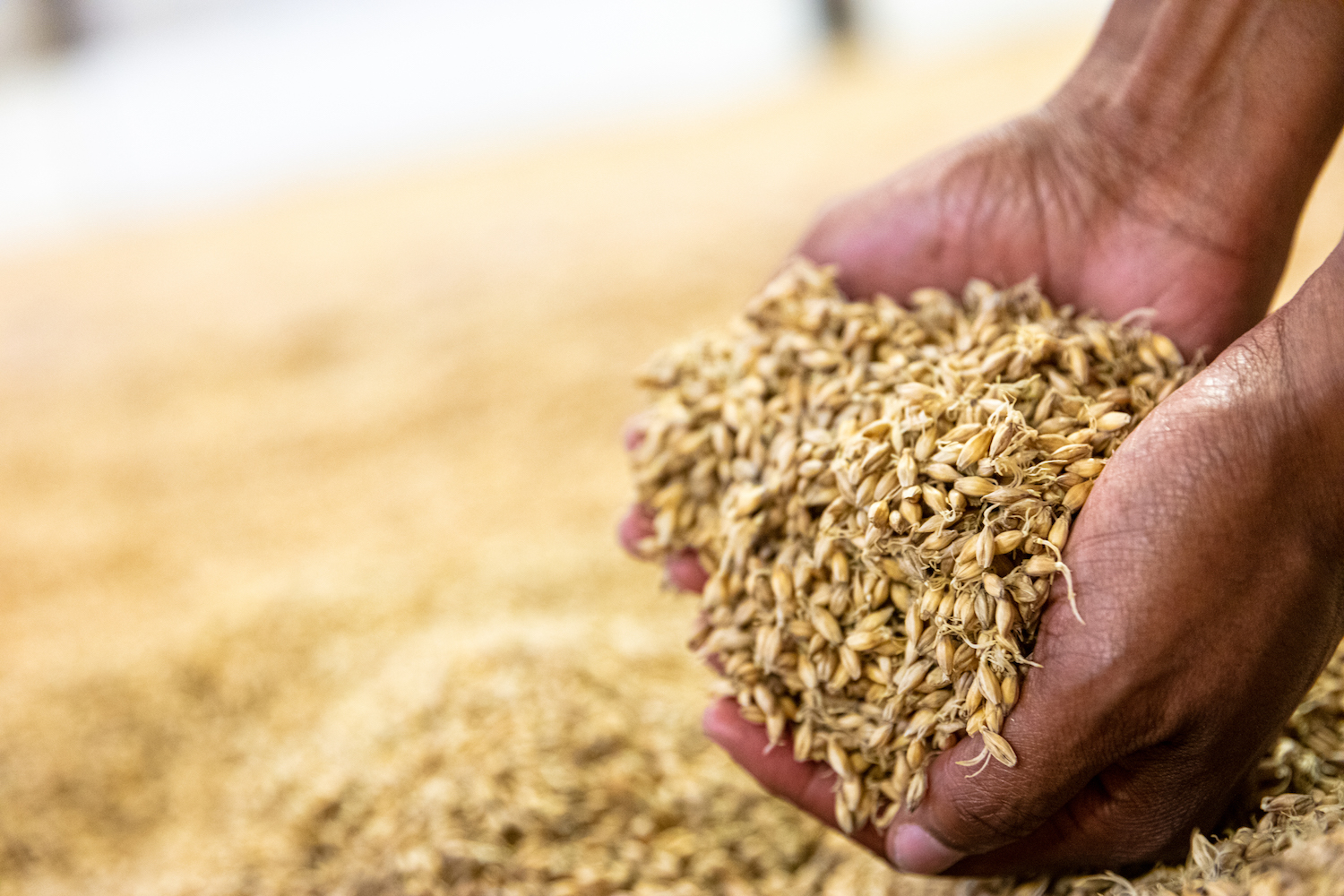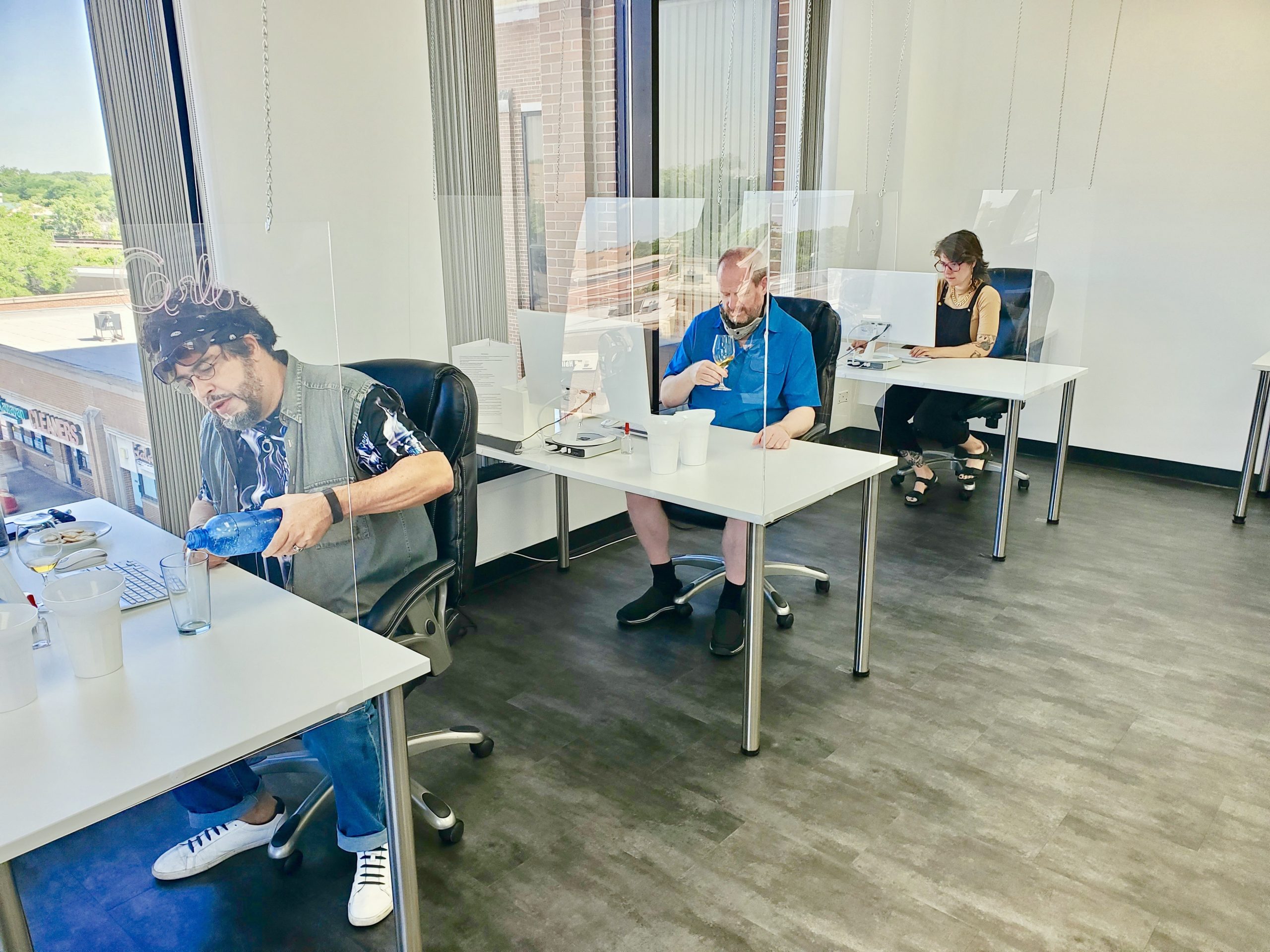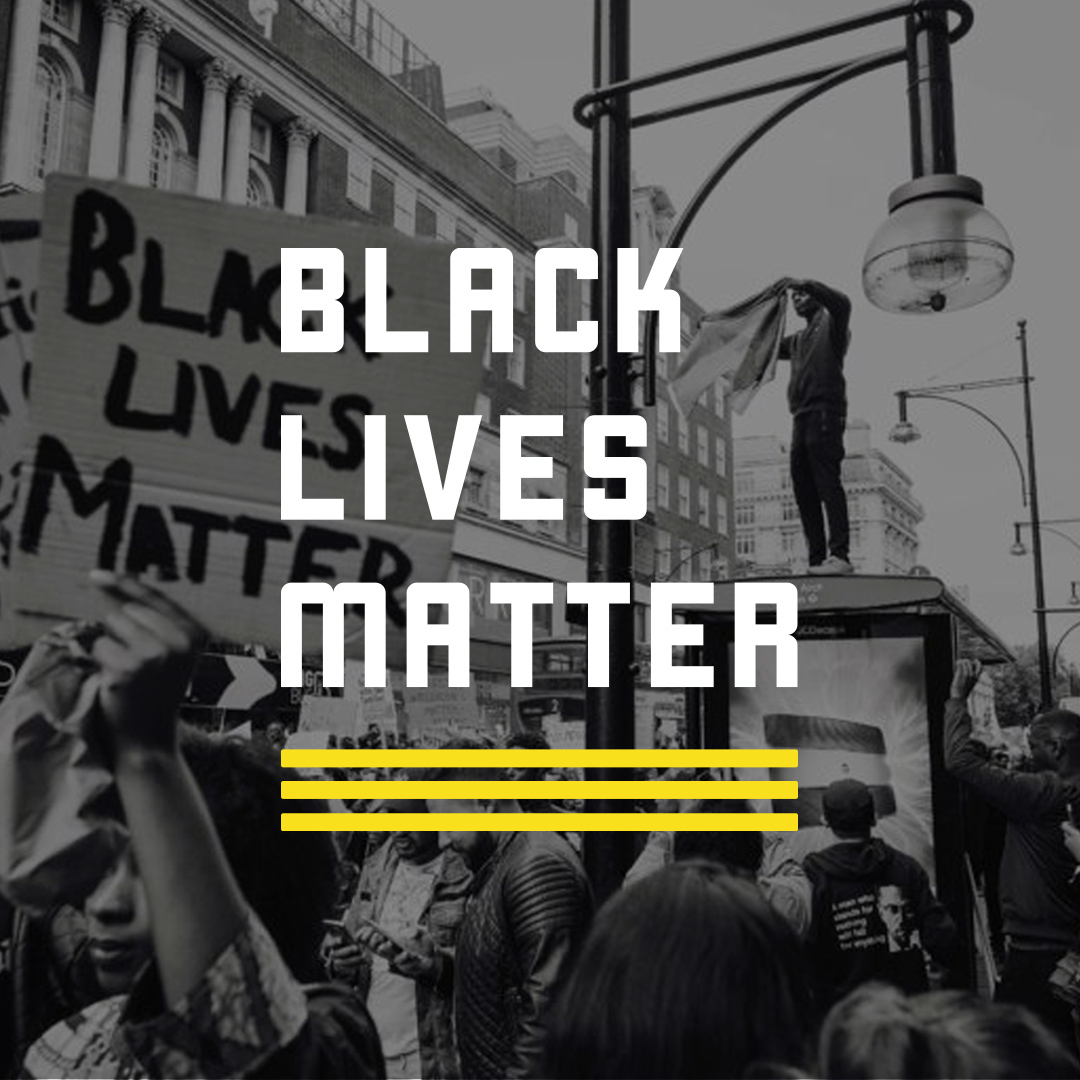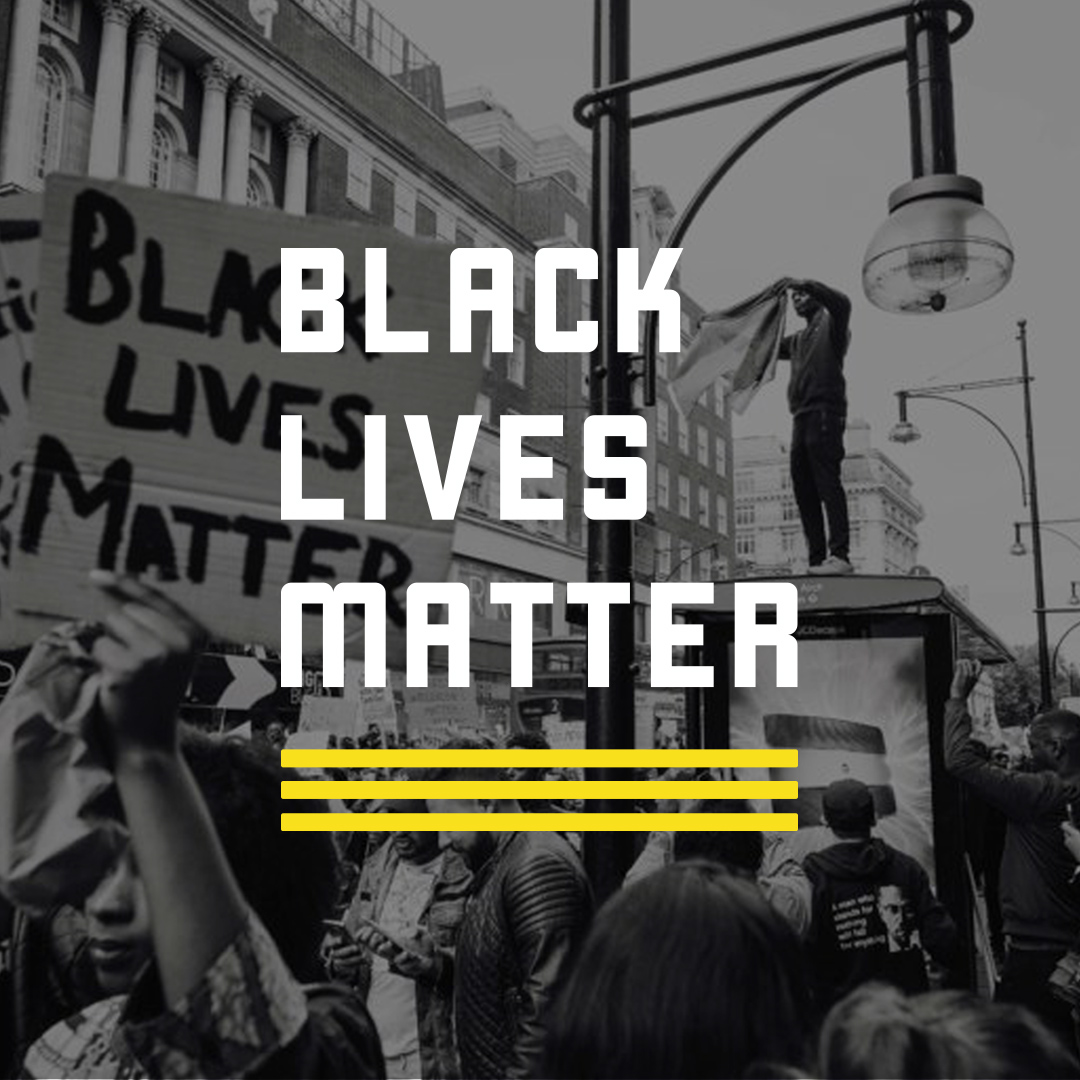“It’s time for people to understand that what’s being made in the States is just bonkers good, and it gets lost because there’s this perception that single malt whiskey must be imported.”
In the middle of a blizzard in March of 2016, at Chicago’s beloved Marcy Street Binny’s, nine distillers hunkered down for the first meeting of the American Single Malt Whiskey (ASMW) Commission. Their mission? To come to a consensus on the category’s standard of identity in order to, according to their site, “establish, promote, and protect” it. “We set aside three hours to hash it out, but it took us about 30 minutes to agree,” states Steve Hawley, President of the ASMW Commission and Director at Westland Distillery. Per that wintry night’s professional parley, an American Single Malt Whiskey must be:
Fermented from 100% malted barley
Distilled at one distillery to no more than 80% ABV
Mashed, distilled, and matured in the USA
Matured in an oak cask of a capacity no greater than 700 liters
Bottled at a minimum of 40% ABV
That definition became a currently-pending petition to the TTB, and in the meantime, the commission’s members are finding multiple avenues to educate trade and consumers alike. BevTest spoke with some of the member producers about their goals, their challenges, and their strategies for spreading the whiskey word.
Classification Begets Innovation
Why, with a broad spectrum of single malts available, should ASMW have its own unique, protected contribution? Rick Wasmund, Master Distiller at Copper Fox Distillery, believes that while the traditions of single malt whiskey from places like Scotland are “well-served,” the American category possesses endless opportunity for “variation, experimentation, and artistic expression.” One of his expressions, for example, uses a peachwood smoke on malted barley, followed by the inclusion of toasted peachwood chips inside of the oak barrel, resulting in flavors Wasmund describes as “different from anything else in the world.”
Steve Hawley points out that the creative space granted by an ASMW classification has not only been encouraged by single malt producers across the pond, but is additionally tinged with a bit of envy for that space. In regulating ASMW, Hawley explains that “what we’re doing helps solidify what single malt means in the world.” Hawley lauds the high quality of Scotland’s single malt whiskies, but notes that their traditions and regulations don’t leave as much room for the “freedom to try new things” that exists in the ASMW category.
This “freedom” is a cornerstone of ASMW, which is why John McKee, founding commission member and Co-Founder of Headframe Spirits, emphasizes that, in cementing a category standard, “we’ve always tried to be inclusive without limiting the category.” McKee further explains the need for ASMW to have its own recognition by shining a light on the fact that “for almost 20 or 30 years, really important entrants in the world of malt whiskey have come from America,” and “it’s time for people to understand that what’s being made in the States is just bonkers good, and it gets lost because there’s this perception that single malt whiskey must be imported.”
“People that are shopping around for single malt whiskey are not walking to the bourbon section, the craft section, or the ‘other section.’ They’re going to the single malt section and we need to be there.”
Pushing the Rock Up the Hill
The path to ASMW’s regulated classification is not without its challenges. John McKee bluntly states that “the pace of the bureaucracy is the largest impediment to what we’re trying to do.” McKee further emphasizes that “we can convince people, we get the liquid to the lips and blow people away, but if we can’t get that change at the standards level, then every liquor store we go into, every bar we go into, we’re starting the conversation over from scratch of where it belongs and how to talk about it.” Paul Hletko, founding commission member and FEW Spirits Distiller, continues this issue by pointing out that lack of proper categorization then leaves trade and consumers alike to wonder “How do you stock this in your retail? How do you stock this in your bar? It doesn’t belong in the scotch, and it doesn’t belong with the bourbon or the ‘world whiskey.’ Where does it fit?”
Steve Hawley presses this importance of spatial distinction of the category, noting a huge disparity in production cost as well as difference in character. “We’re not bourbon. I think the price of corn these days is around seven cents a pound, whereas the price of our main raw ingredient starts at thirty five cents a pound and goes up to a dollar twenty a pound. It’s a whole different ball game. People that are shopping around for single malt whiskey are not walking to the bourbon section, the craft section, or the ‘other’ section. They’re going to the single malt section and we need to be there.” Hletko is optimistic that this is resolving as time goes on, with more ASMW producers adding more bottles demanding their own shelf, and while McKee agrees that “we will overcome this endeavour,” the slow passage of time has turned ASMW’s challenges into “not quite a Sisyphean task,” but “you’re pushin’ a rock up a hill.”
“The pace of the bureaucracy is the largest impediment to what we’re trying to do. We can convince people, we can get the liquid to the lips and blow people away, but if we can’t get that change at the standards level, then every liquor store we go into, every bar we go into, we’re starting the conversation over from scratch.”
How to Package for Recognition
In finding a space on liquor store whiskey shelves, it’s hard not to consider packaging. “It’s important that we don’t misrepresent our product,” says Rick Wasmund. “We say that it’s American Single Malt Whiskey, we don’t go out to the next level and say ‘This is not Scotch,’ we say ‘This is what we do.’”
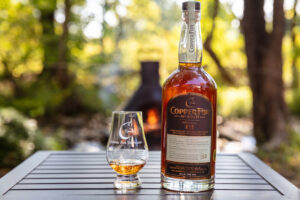
Echoing this need for clarity, Paul Hletko believes that individual producers will have their own approaches, but that it’s important that the packaging is clear so that “if someone’s out there looking for ASMW, they know where to get it, and if they’re not looking for it and they find it, they will have comfort in having an idea of what they’re getting.”
Steve Hawley also emphasizes the importance of nomenclature, adding that “from a commission standpoint, it’s not our place to try and lobby our membership for a certain aesthetic approach.” When it comes to the notion of creating packaging comparable to well-known single malts of the world, Hawley admits that the line is less defined. “Does Westland packaging look traditional? No, but we put it in a box because that’s something consumers recognize as a single malt thing. Do we want it to look like it’s 100 years old because that’s what all the Scotch whiskies look like? No, because that’s not authentic. It’s a constant dance and decision making process when it gets into all the details of that stuff.”
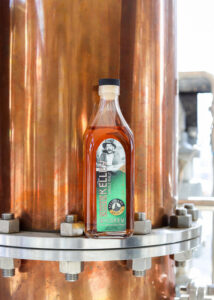
John McKee also understands this dance. “You see some people will play in the green and brown bottle category, because that’s what people normally associate with malts. We elected to say, look, this is an American Single Malt and
we are doing things differently, so let’s go ahead and put it in a clear bottle and let them see the juice that’s inside.” McKee also felt that ASMW producers would benefit from the reduction in expensive secondary packaging proposed by “big players like Beam Suntory” at the most recent World Whiskey Forum in Seattle. The proposal was made with the mindset of environmentally conscious efforts, but McKee feels that by eliminating the fancy packaging that many smaller producers can’t afford, the shift could “take a little bit away from inequities in the marketing playing field.”
Simultaneously, McKee is also “not blind to the concept of what people’s eyes are drawn to when they think of a malt” and Headframe’s recent release of Kelley, their eight year American Single Malt Whiskey named for the nearby mineyard and a nod to the area’s Irish heritage, does “take liberties” in its packaging with a Celtic knot design on a green label. Ultimately, Hawley reiterates that what’s most important is the section that ASMW is found in, and that it “doesn’t have anything to do with a brand’s design preferences” but “everything to do with how a retailer decides they are gonna organize their store.”
“Through real world demonstration, we are certifying bars, restaurants and retailers to rally behind our cause.”
Fueling Momentum
As ASMW’s membership is full of innovative minds, there is constant growth in the category’s enlightenment momentum while the bureaucracy moves at its glacial pace. “Education,” states Steve Hawley, “is an important mission of the commission.” Westland’s strategy of spreading the category’s knowledge has been outreach, as well as regular trade and consumer events. As president of the commission, Hawley explains that, through “real world demonstration,” they are “certifying bars, restaurants, and retailers to rally behind our cause” because “it’s a hugely important part of our agenda to get them to recognize ASMW, whether there’s a federal definition or not.”
Paul Hletko follows this current, crediting the work of the ASMW commission in “spreading the story.” “We’re out talking to people, we talk to journalists and they write stories about it, and we talk about it with store owners and bartenders.” Hletko believes that if industry professionals are well-versed in the category then they become its “gatekeepers,” and while their distinction may not be the “law,” it “might as well be.” John McKee is in full agreement with taking ownership of the category’s successful integration into the market. “It’s on us,” McKee says, “and on all of us; the manufacturers and marketers and of course bartenders on the retail side, to help people recognize that we have this pride of what an American Single Malt Whiskey is. It’s a well-seasoned pride, we make extraordinary spirits.”
Though it’s uncertain when the ribbon of a TTB-recognized American Single Malt Whiskey type will be cut, its dedicated producers have no plans to give up hope. Steve Hawley reassures us all that the commission’s work continues: “We’re a bunch of whiskey makers, so we’re used to being patient, but we’re not just sitting on our hands waiting on the regulatory process.”

